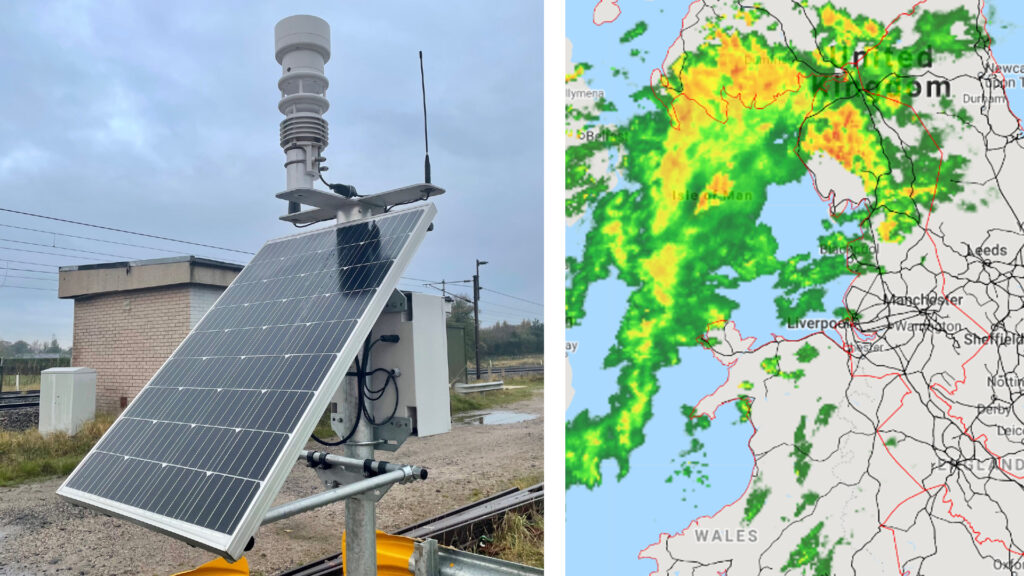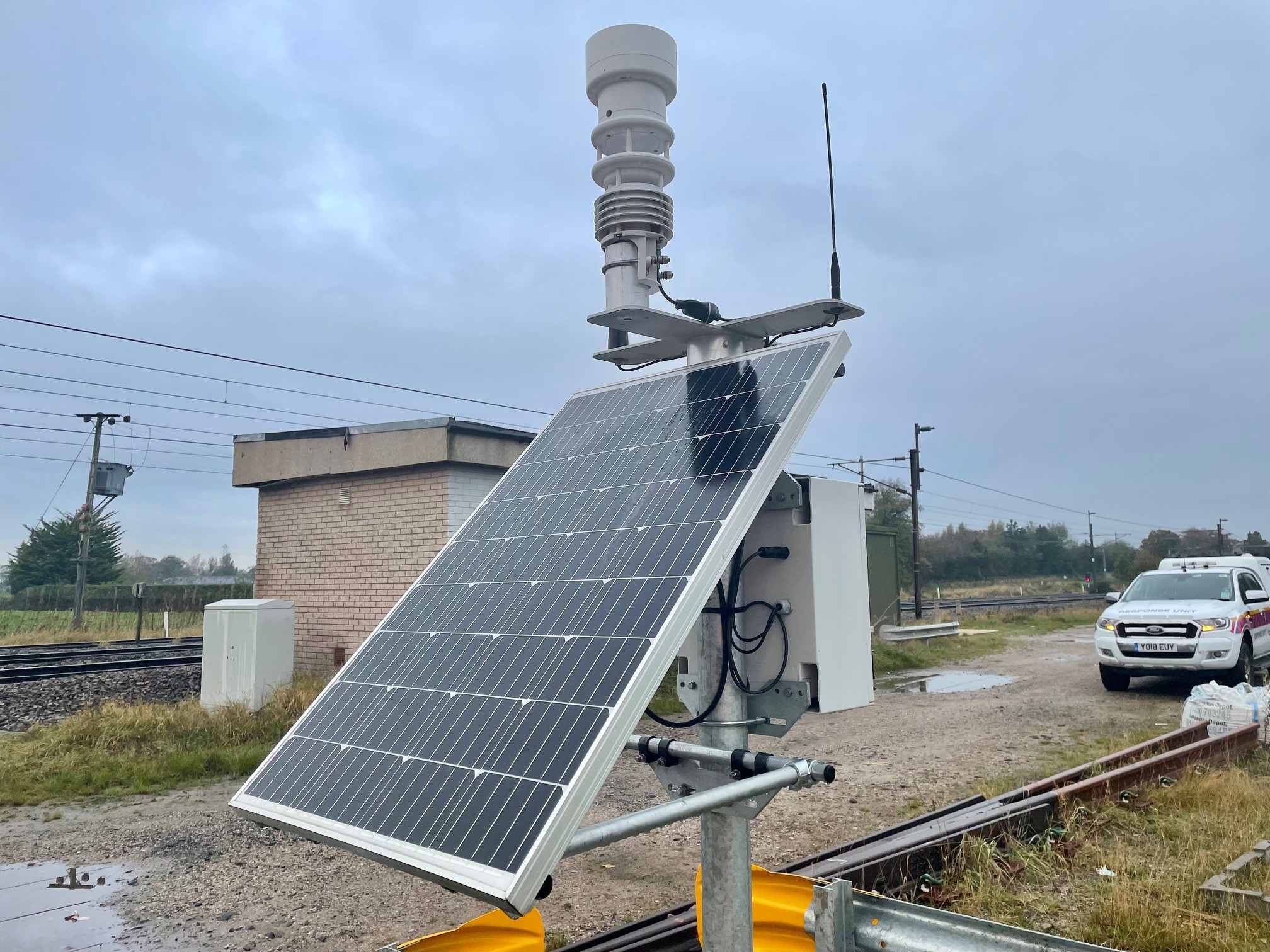We’re using new technology to help us keep the railway running in hot weather.
Last year, our teams installed a system of 60 solar-powered weather stations to monitor extreme weather conditions in real-time.
The ability to monitor the weather in real time allows us to quickly respond to hot weather incidents and keep more services moving instead of imposing region-wide speed limits.
We’re now using sustainable weather stations across the West Coast Main Line – which runs from London Euston – to predict where the railway could be at risk of damage, with temperatures reaching the highest they have ever been in Britain this week.
How can the hot weather affect the railway?
The hot weather, particularly direct sunlight, can cause track temperatures to reach more than 50 degrees Celsius.
Steel rails absorb heat easily and can reach up to 20 degrees above the surrounding air temperature. When steel becomes very hot it expands and rails can bend, flex and, in serious cases, buckle.
Our network of 25,000 volt overhead electric cables which power cables is also susceptible to the hot weather.
It can cause the steel wires to overheat and expand causing them to sag. They can then hang too low and get caught on passing trains causing them to come down.
What’s forecast?
We’re using the weather stations to determine where and when issues will arise due to hot weather. But they have a longer-term opportunity.
They can measure:
- wind speed and direction
- wind gust and direction
- air temperature
- relative humidity
- dew point
- rain fall totals (precipitation rate and accumulation).

The data gathered will help our weather experts to predict which parts of the network are more vulnerable to bad weather before it even hits.
This will help us to carry out our seasonal preparation work and fix issues on the railway before they become more serious.




